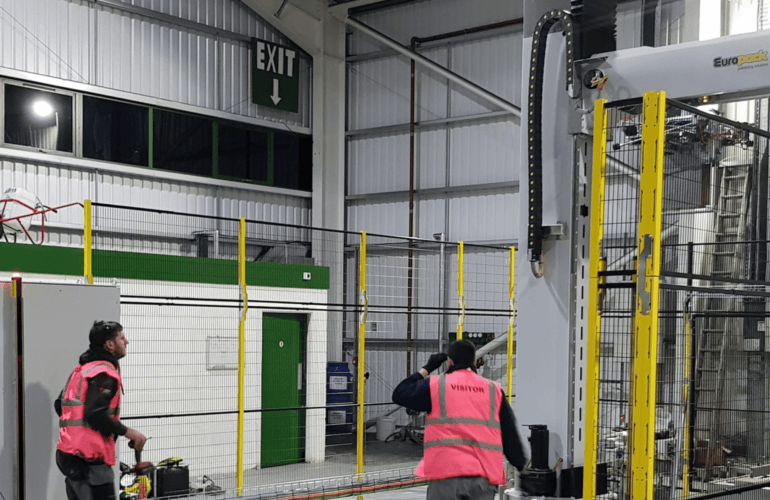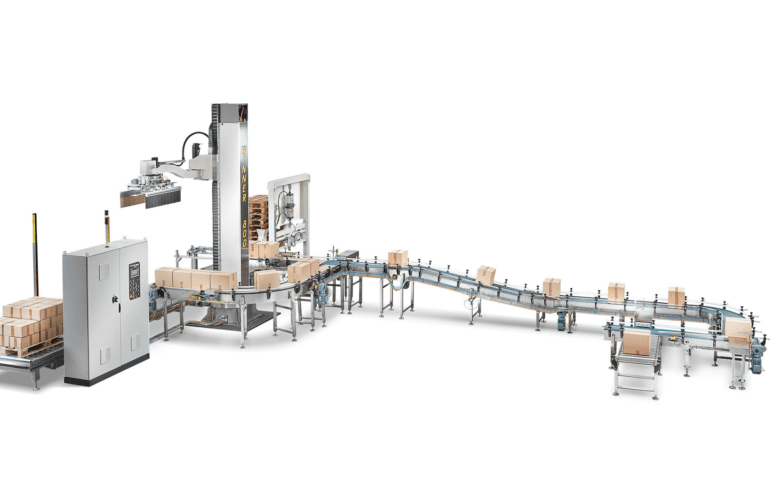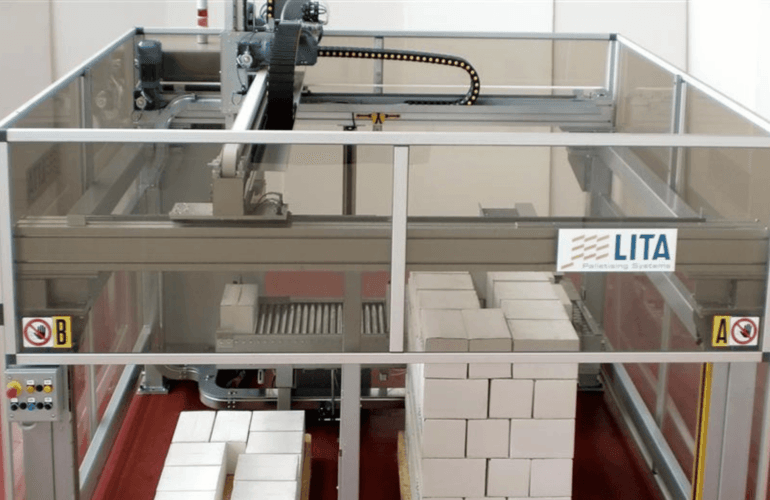Manufacturers are currently facing multiple challenges with soaring expenses, changing consumer demands and increased competition all making growing and scaling a business seem like an uphill struggle.
Investing in automation can help by streamlining operations to increase efficiency and boost production capacity, while simultaneously reducing costs. Here, we explore the main benefits of automation and how it can help you stay competitive.
1. Lower operating costs
Although automation requires capital investment, over the long term it can help reduce day-to-day running costs. Robots use heat and light more effectively, and newer machines are even more efficient to run.
The innovative KERS energy-saving system in Europack’s Winner Green range of palletisers uses up to 70% less power than conventional robotic palletisers. Similar to the energy regeneration system on hybrid cars, instead of dispersing the kinetic energy in the form of heat during braking, it is partially recovered as electric power, cutting down on running costs significantly.
2. Higher productivity
Machines don’t need time off to rest or recover. They can work to capacity 24/7 if required (with only short breaks for maintenance) making them much more productive than a human worker. In fact, it’s estimated that one robot can do the job of three to five individuals, depending on the specific task. Machines can also lift heavier loads and perform repetitive movements faster and more frequently, without the risk of manual handling and other injuries.
All this means that investing in automation can dramatically increase productivity and output, allowing businesses to take on a larger workload without the need to hire more staff.
3. Reduced wastage
Introducing automation reduces the risk of human error. Not only are robots more accurate but they are also more consistent, which means a reduced number of faulty goods coming off the production line as well as fewer mistakes and less waste as a result. For example, sack-filling machines quickly fill bags to the same level every time, so product doesn’t overflow and get wasted.
4. Improved customer satisfaction
The level of consistency that machinery can deliver also helps to improve customer satisfaction. Tasks can be completed to the same specifications each time, so customers can be sure every delivery will be of an equal standard. The improved reliability also helps to reduce lead times and ensure orders are delivered on time, which translates into greater productivity and profits.
5. Increased efficiency
By automating repetitive and labour-intensive jobs, businesses can stop focusing on menial tasks and put valuable time and resources into what’s needed to improve and grow the business. Employees can be redeployed to work in more strategic roles and on projects more suited to their skills, such as developing new products, expanding into new markets or improving customer service.
Remain competitive
Businesses are operating in an increasingly competitive market both locally and globally, but with the right automation tools and strategies in place, manufacturers can improve the quality of their products, cut waste and costs, scale their operations and thrive.




